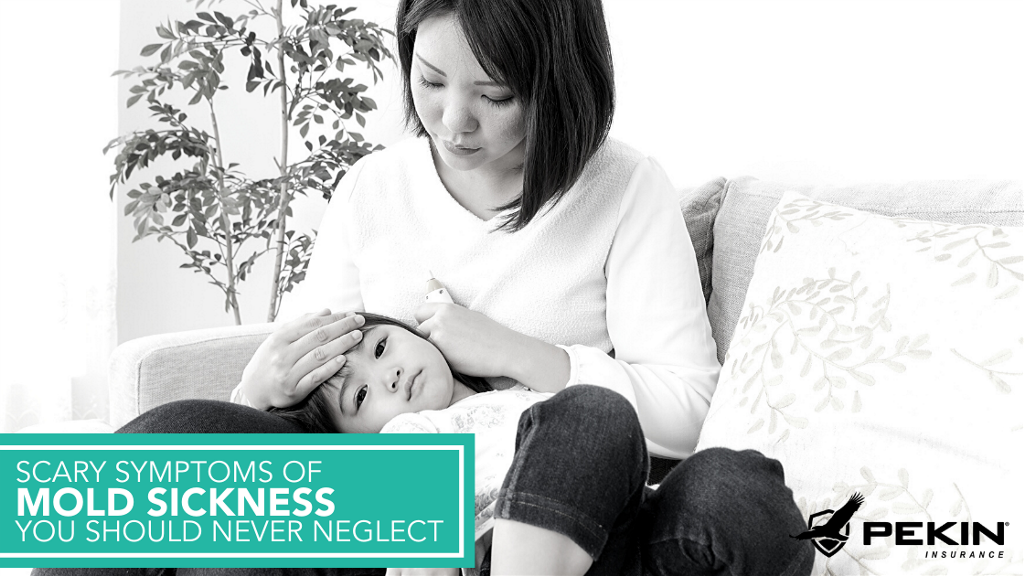The Scary Symptoms of Mold Sickness You Should Never Neglect

It grows in darkness and silence. It could damage your home and your physical health. Discover the symptoms of mold sickness to stop the problem in its tracks.
What Makes Mold Dangerous
The word “mold” describes thousands of species of fungi. The Centers for Disease Control and Prevention (CDC) say 300,000 of these species could exist.
Not all mold is bad. It works wonders in blue cheese, penicillin, and soy sauce.
Still, some molds produce toxins and cause:
Respiratory tract symptomsCoughRunny noseDry skinShortness of breathChest tightness
Mold eats organic matter and causes structural damage in buildings when left unchecked. The damage spreads to your belongings if the problem gets bad enough.
Mold rarely shows up without other harmful elements like:
DustBacteriaDust mitesChemicals
Warning Signs: How to Know Mold Is in Your Home
Mold grows in the following conditions:
Temperatures of 70° F or higherMoisture accumulation for more than 24 hoursOrganic materials to feed onHumidity higher than 55%
Forgive us for stating the obvious. You have a mold issue when you see it on surfaces. It grows in black-green splotches.
Stains on walls and ceilings could spotlight the problem. Look for standing water, especially if your home has a history of flooding.
What does mold smell like? Musty and gross.
If you catch a damp, stale whiff, investigate it or have someone check it for you.
What’s another sign of a mold problem? You get sick and don’t know why. The following symptoms would point you toward the issue.
The Symptoms of Mold Sickness
The Cleveland Clinic says mold exposure can lead to:
FeverChillsFrequent headachesSore throatBloody coughInflamed lungs
The milder symptoms feel like seasonal allergies. Here’s the big dilemma: untreated mold issues could lead to lifelong problems like asthma.
Here’s the good news:
Exposure to mold doesn’t always put you at risk.The symptoms will likely clear up if you catch them early enough.
According to the Mayo Clinic, risk factors for developing mold sickness include:
A family history of allergiesFrequent exposure to mold through workWorking or living in a building with water damageLiving in a home with high humidity
WebMD says these people have an increased risk of mold sickness:
InfantsThe elderlyAnyone with a compromised immune systemAnyone with a chronic lung disease
Treatments for Mold Sickness
Healthline recommends five treatments for mold sickness:
Allergy shotsNasal sprays or rinsesSingulair to reduce mucusZyrtec to cut down on inflammationSudafed to decrease swelling from allergic reactions
Getting Rid of the Mold Problem
You find small amounts of mold in your home. What happens next?
You can’t go wrong with these cleaning options:
Clean the affected area with soap and water.Mix one cup of bleach in one gallon of water, then scrub the mold with the solution.Spray the surface with hydrogen peroxide. Let it sit for 10 minutes before wiping it down.Spray the surface with white distilled vinegar. Let it sit for an hour before wiping it down.
Open windows for ventilation if you clean with bleach. Never mix it with ammonia or other cleaning products.
Wear gloves and safety goggles to protect your hands and eyes. You don’t want to breathe the moldy air, so wear an N95 respirator.
It’s tough to remove all the mold from drywall, insulation, or carpeting. Throw these materials away and replace them when needed.
Contact a remediation service if you find large areas covered with mold.
Think about hiring a mold specialist certified by one of the following organizations:
American Council for Accredited CertificationNational Environmental Health AssociationInstitute of Inspection, Cleaning and RestorationAmerican Industrial Hygiene Association
Prevent or limit mold by doing the following:
Use a dehumidifier in areas that don’t get much air circulation, like the basement.Fix leaks in your roof and gutter.Open windows and use fans to boost air circulation.Use an exhaust fan in your bathroom.Don’t leave damp clothes or towels in the hamper.Fix leaking water pipes.Clean behind and underneath appliances on a regular basis.Use area rugs instead of wall-to-wall carpets.
There’s no way to remove all the mold from your house. But you could keep your home and health safe from mold sickness when you take the right steps.
Explore the protective powers of home insurance! Call, email, or message your local Pekin Insurance agent.





